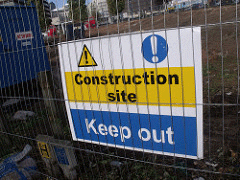
In the midst of giant cranes building hotels and condos sprouting like weeds, the Nashville Census Bureau reported a few years ago that the city's poverty rate increased in 2014 to 19.9 percent, meaning one in five Nashvillians lives in poverty. This past year in Chicago, a gleaming new family park opened downtown while teachers fought pension cuts and faced furlough days.
Buffalo and western New York is perhaps the best example of this dichotomy. The region has received $5.5 billion in new economic development investment over the past few years. Leaders are expecting thousands of jobs to come on line in the next few years. But for the African-American, Hispanic, refugee, or handicapped communities, this hasn’t translated into economic power yet. Across the region, 37 percent of African Americans and Hispanics live below the poverty line, compared to 9 percent of whites.
We can look at the problem through the lens of segregated neighborhoods, through the disparate impact on people of color by failed policies of the past, or go to the root cause of a broken economic system that over-rewards some. But the one thing we must recognize is that we can’t talk about this problem if we don’t talk about race.
In March, VOICE-Buffalo and our affiliate NOAH in Niagara Falls brought Buffalo native, Labor Secretary Tom Perez, home to talk about the problem.
“Zip code should never determine destiny,” Perez told 1,200 people at a rousing public meeting in a local high school.
His voice strained as he talked about how Johns Hopkins University and medical center, the largest employer in Maryland, is also the state’s largest employer of people who have been incarcerated. The University finds them among its most loyal and productive employees, he said. “The employees are loyal, talented, and they got game,” Perez continued, saying that so far too few employers are willing to make that kind of effort.
He discussed what is truly driving divisive development: “When the Wall Street bonus pool, in 2014, is $28 billion and the total amount that full-time minimum wage workers earn in the United States is barely half of that, we have an economy that’s out of balance,” he said. Of course, the former group is overwhelmingly white and the latter disproportionately people of color.
In a nutshell, Perez advanced the idea that the “power of We” – people working together – is how we get past these problems.
Advancing policies that focus on the right problem
If the first step toward solving a problem is naming it, we’re there. Our affiliates in Buffalo are advancing some specific policy ideas like soft skills training, partnering with the construction trades, and specific supports and outreach for immigrants and refugees who make up a huge new population in the area.
These will not seem too radical, but as Pastor James Giles, president of VOICE-Buffalo, put it, “What has been missing is the community component. It’s part of our job to develop and strengthen the relationships that connect the various players needed to build a pipeline for jobs and training.”
A perceptive reporter in Buffalo, Charlotte Keith of the nonprofit news source Investigative Post, ran a story the week before Perez’s visit questioning what kind of relationships existed between labor unions and workforce development agencies in the area.
Too often those relationships have faltered along the lines of race and ethnicity, and that’s where grassroots community and faith-based organizations can take the lead.
We can name the problems and connect the partners, by building the relationships and the political will to make sure this work gets done. Inclusive development is a practical imperative to improving our cities. We won’t end divisive development, though, until we name it for what it is: a legacy of racially-skewed policies of the past.
(Photo credit: Elliott Brown via flickr, CC BY 2.0)






Comments